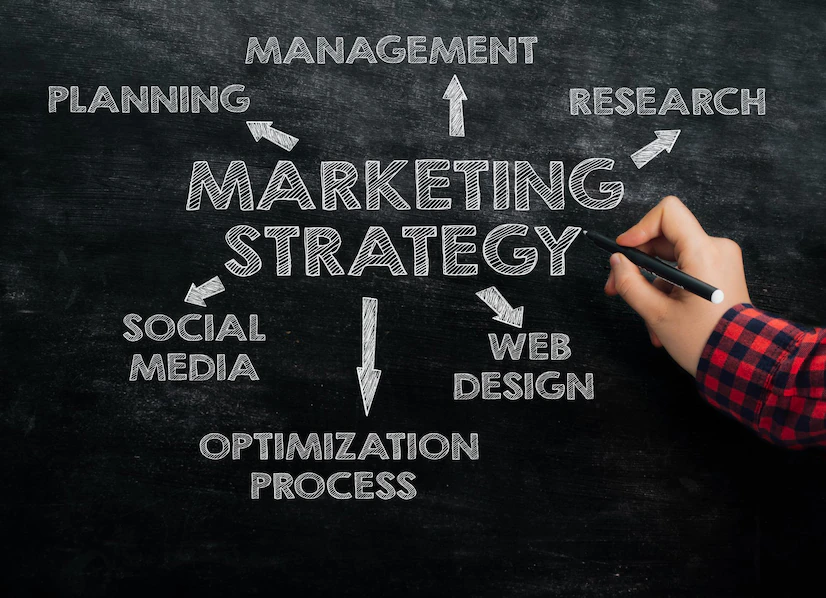3 Marketing Strategies To Implement In 2024
4 Mins Read
Published on: 08 December 2023
Last Updated on: 09 October 2024

toc impalement
Good marketers are always anticipating what’s next. They’re predicting what will be the newest trend to tap into and how to implement it for their brand. And with 2024 right around the bend, now is as good a time as ever to think about your marketing strategy in the new year.
In 2023, marketers jumped onto new social media trends, leaning heavily into TikTok as an advertising platform and exploring Threads. They looked for ways to automate their processes, trying out platforms to help them get their work done more efficiently. These practices aren’t going anywhere in the new year, but there are some new strategies on the horizon. Consider this your 2024 manual to stay ahead of the marketing curve.
1. Create High-Quality Content That Will Perform Well
You may see this first strategy and assume that your brand already has it taken care of. But how much content are you producing that isn’t ending up toward the top of a search engine results page? Is your editorial team wasting their time creating content without seeing any results? Are you writing on the same keywords time and time again without much traction? If you answered “yes” to any of these questions, it’s a sign that you still need to work on creating high-performing content.
One way to ensure that the content you’re producing is both high quality and fruitful is to focus on content pillars. A content pillar is essentially a longer-form blog post, typically 3,000 or so words in length. This post should include up to 20 valuable short- and long-tail keywords, among them the questions your audience is asking. This ensures your post will address audience members’ search intent while providing them a comprehensive overview of a particular topic. Creating a content pillar takes significant effort, as you’ll need to spend more time on keyword research and topic development.
There are two main benefits of content pillars. First, the high-quality, comprehensive information you offer will make your brand a trusted resource among consumers and in the marketplace. Second, search engines will recognize the authority of this web of interconnected content, and your rankings will improve. This, of course, leads to more eyeballs on your site. While there’s nothing new about creating premium content, thinking about content creation through content pillars perspective can be a winning strategy in 2024.
2. Achieve Hyper-Personalization Through AI
With the launch of ChatGPT late last year, brands and marketers have spent 2023 learning about artificial intelligence. Many marketing teams dedicated their efforts to developing and testing AI strategies for their unique business needs. Some brands, like Coca-Cola, leaned on AI and their consumers to innovate. In February 2023, the brand launched “Create Real Magic,” a campaign that enabled audience members to use an AI platform to create new pieces of art. For its part, print and digital publisher Cosmopolitan created the world’s first AI magazine cover, demonstrating AI’s capabilities to the masses.
In 2024, the focus will be on continuing to use AI in new ways, including hyper-personalized marketing. Personalized marketing is known to perform better than traditional marketing. Consumers like to have a tailored purchasing experience, with brands treating them as unique individuals rather than a mere dollar sign.
Hyper-personalization means offering targeted messaging to key audiences during specific time periods. Starbucks is known for using hyper-personalization tactics, sending timely messages to users based on prior purchases.
Hyper-personalization can take the form of serving an ad to a specific target audience while they’re browsing social media. Or it can be a chatbot providing product details while a user is on a company website. By adopting a hyper-personalized marketing strategy, you’re offering a premium customer service experience. This can in turn create a more loyal consumer base, one that will tell others about your brand and be continual purchasers.
3. Leverage First-Party Data
Every digital marketer knows about third-party cookies, those bits of data placed on a device by different websites that track the user’s next site visit. They’re the reason you see an ad for Sephora on a blog or social platform after searching for lipstick earlier in the day.
Joining Firefox and Safari, Google has announced that it will be phasing out third-party cookies. By mid- to late 2024, the search engine will prohibit cross-site tracking.
The slow death of third-party cookies is a result of data and privacy protection concerns. Users today are demanding that their lives remain private, particularly as they open themselves up more to the internet. As these cookies diminish, marketers will need to work harder in order to serve targeted ads to their core demographic.
This means relying more on first-party data; namely, information you source and collect from your customer base.
If you have a newsletter list or info on past purchases, then you have coveted first-party data. You can build and develop strategic marketing tactics based on this gathered data.
Of course, prioritizing your users’ privacy is of top concern, so all marketers will need to use this information conscientiously. Looking at consumer trends and purchasing tendencies can be a privacy-safe way to learn more about your current and ideal target audience.
Conclusion
The marketing landscape changes daily. Being adaptable and nimble is essential. So while you can start off the year focusing on these strategies, keep an open mind. If you prioritize your consumers’ needs and your brand’s core values, you’ll more likely identify the marketing trends that will work best for you.
Read Also:


















Comments Are Closed For This Article